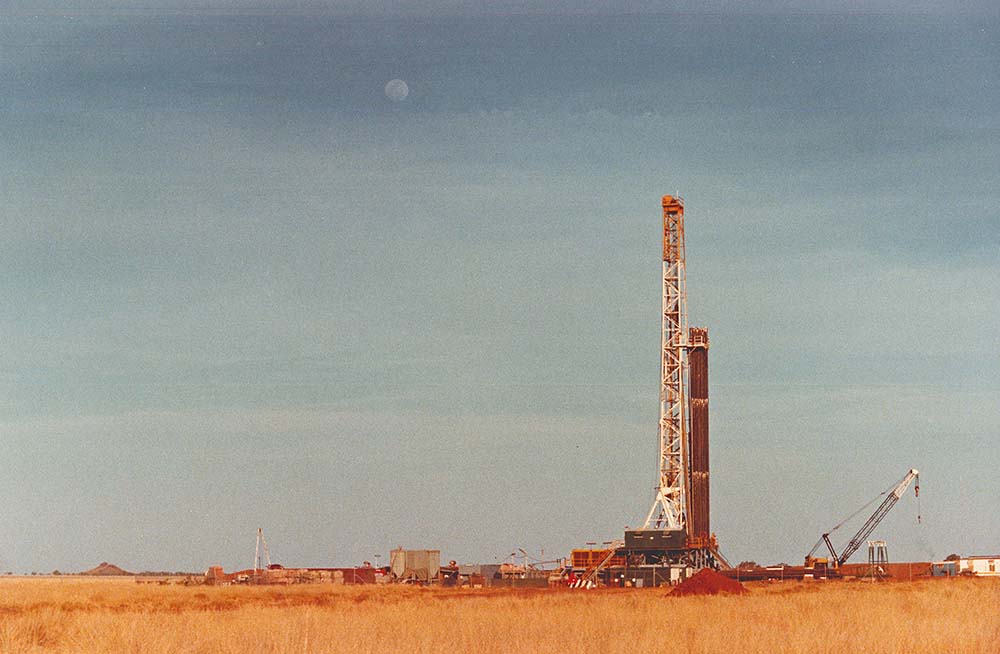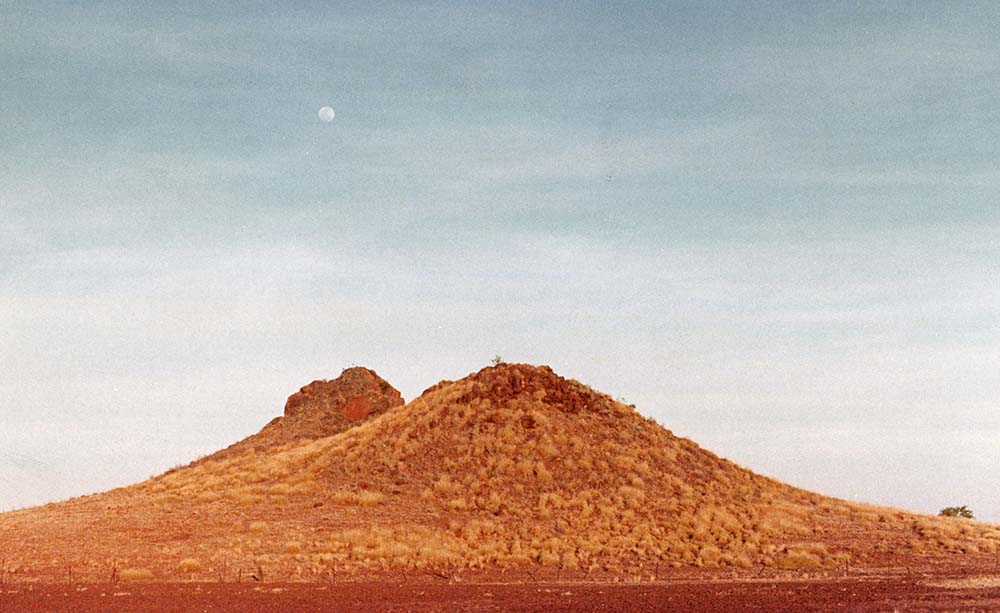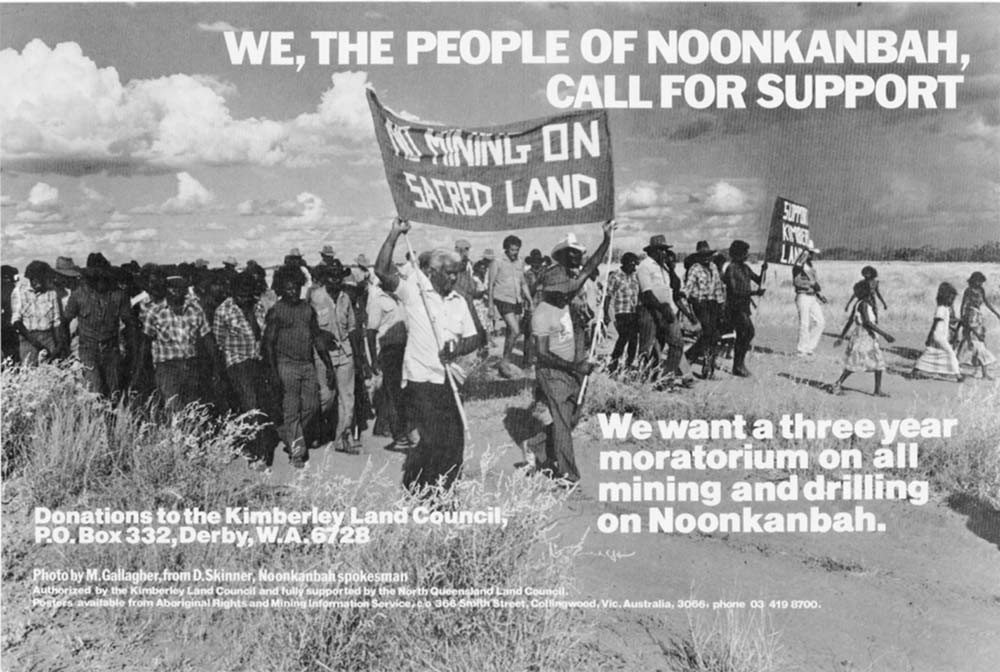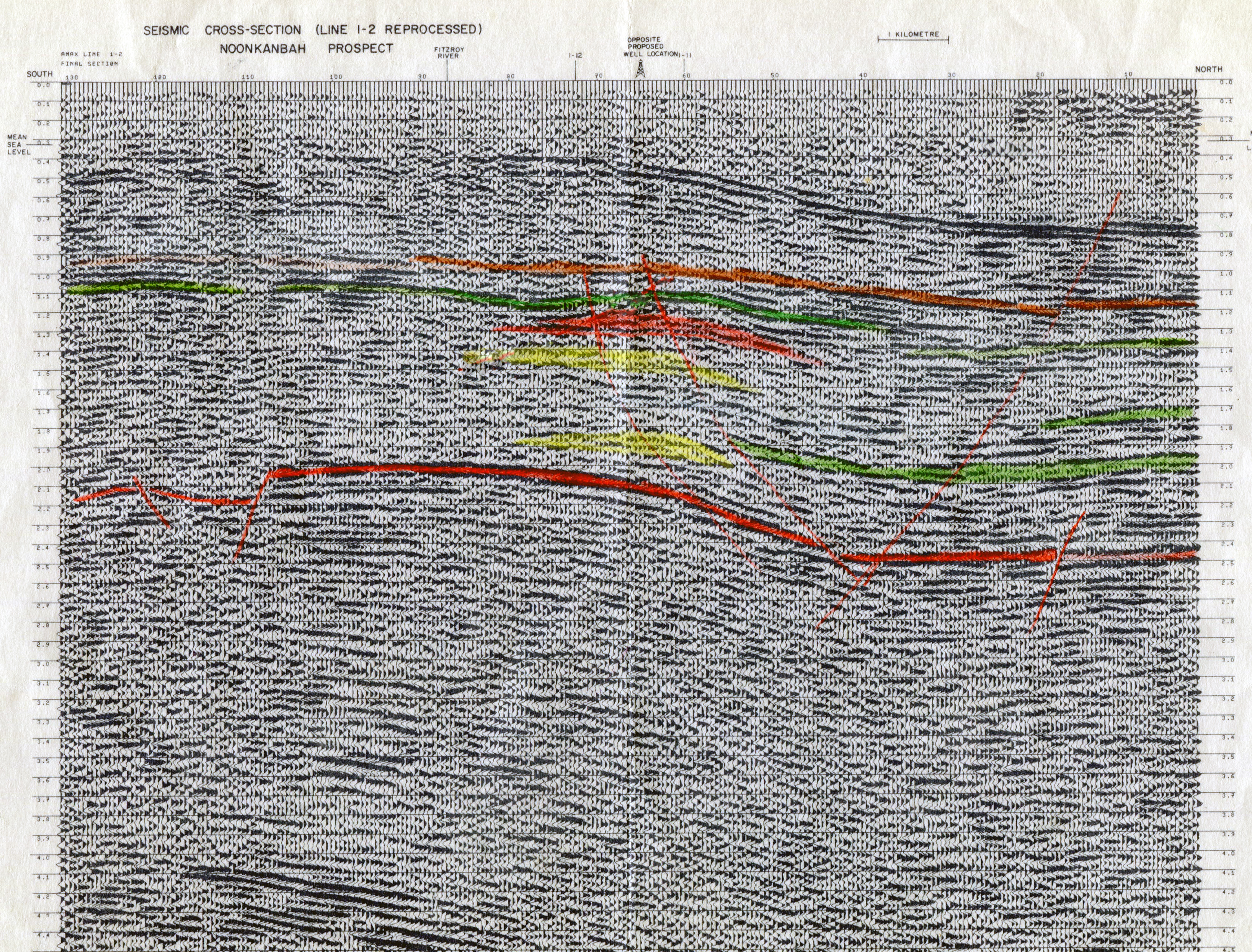Noonkanbah
In 1979-80, the Yungngora Aboriginal Community people who ‘owned’ Noonkanbah Station, a pastoral lease in WA’s Fitzroy Valley, objected to the drilling of an oil well on the Station and denied entry to the companies. Negotiations over several years failed to resolve the issue and, ultimately, the WA Government enforced the law and moved the rig onto the Station under police escort. It was an ugly confrontation but the strategists’ plans to put land rights on the political agenda and launch the Kimberley Land Council succeeded brilliantly.
The claim that the Community was a traditional tribe living on their sacred tribal land and practicing their timeless law was largely a ruse. While they had lived on the station for generations, many were descendants of desert clans and their prevailing ‘law’ included various 20th century ‘travelling cults’ that featured, among other things, a Jesus Christ figure called Jinimin and a spirit called Djuluru, whose rituals involved Hitler and the 1942 Japanese bombing of Broome.
P Hill was purportedly the mounded dirt from a hole dug by a mythic goanna, and it was claimed that any damage to it by the drilling would destroy the local goanna population and potentially the Community itself. The well was actually over three kilometres from the hill, but a supportive anthropologist ‘discovered’ a sacred ‘sphere of influence’ surrounding the hill and covering the proposed drilling sites.
Ultimately, the Community declared the entire station was outside the jurisdiction of the State of Western Australia. Steve Hawke, the Community Press Officer and a leading strategist, enlisted support from the ACTU, then led by his father Bob Hawke, but union efforts to prevent the mobilization and manning of the drilling rig were outmanoeuvred by the WA Government. No significant oil or gas was found.
A history of the confrontation published by Steve Hawke remains the accepted ‘truth’. In 2020/1, I wrote a memoir about it called The Hill with no Song, using the extensive files and reports I had from that time. There isn’t sufficient interest to warrant publication, but it will be attached here for future reference for anyone interested in a view from the other side of the barricade. Several essays dealing with the fabrication of the P Hill ‘sacred site’ and the claims of ‘traditional’ culture have recently been published and are attached here.
Attachments
Secular Thoughts on Sacred Sites, Quadrant Online, August 2023. — 572.8 KB PDF File DownloadThe Ruse of Tradition, Quadrant Online, August 2023. — 716.7 KB PDF File Download



